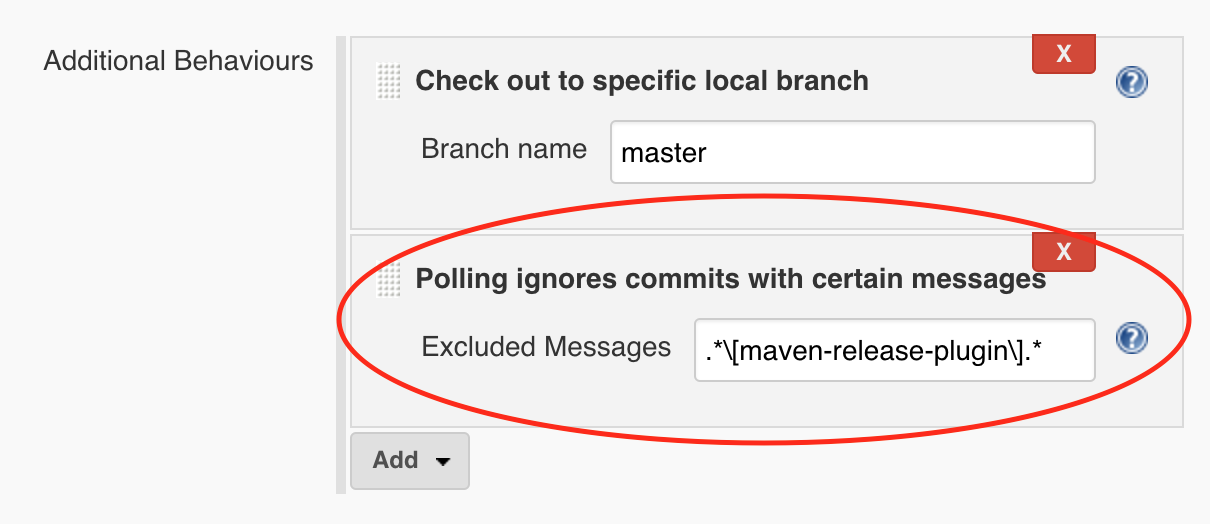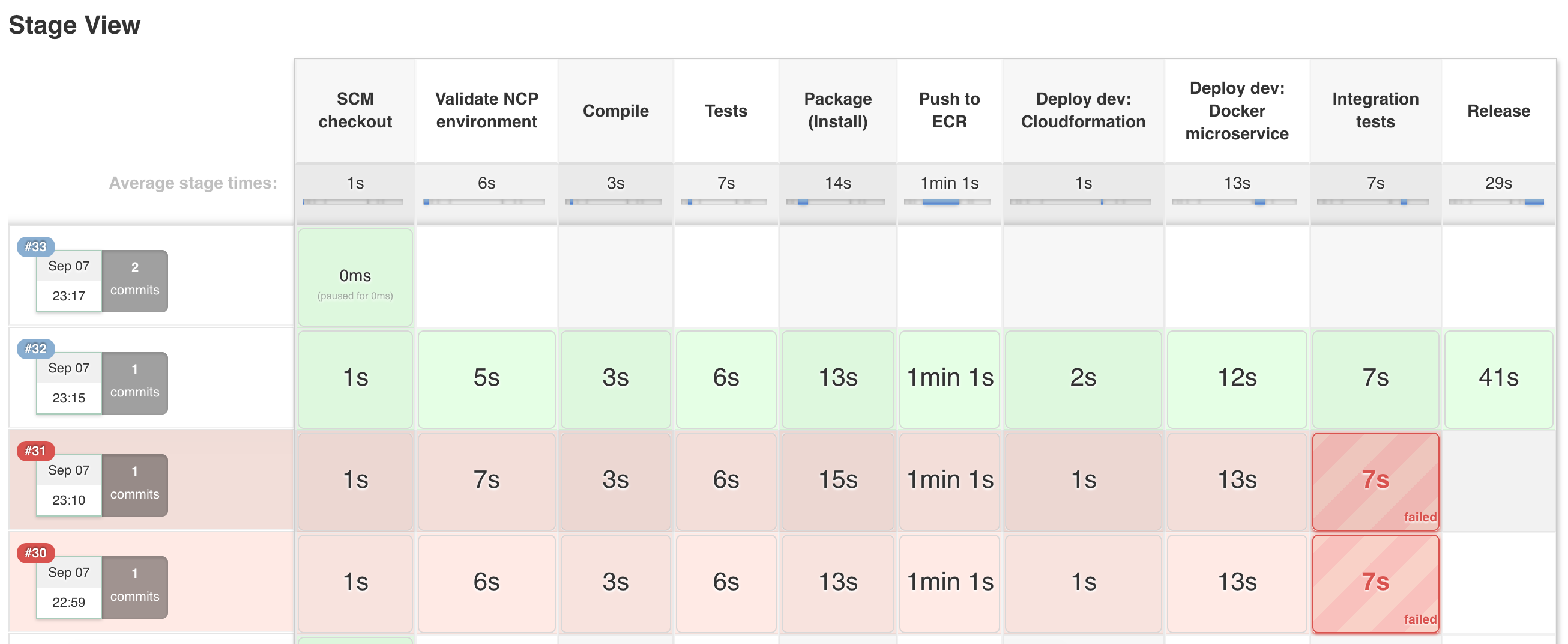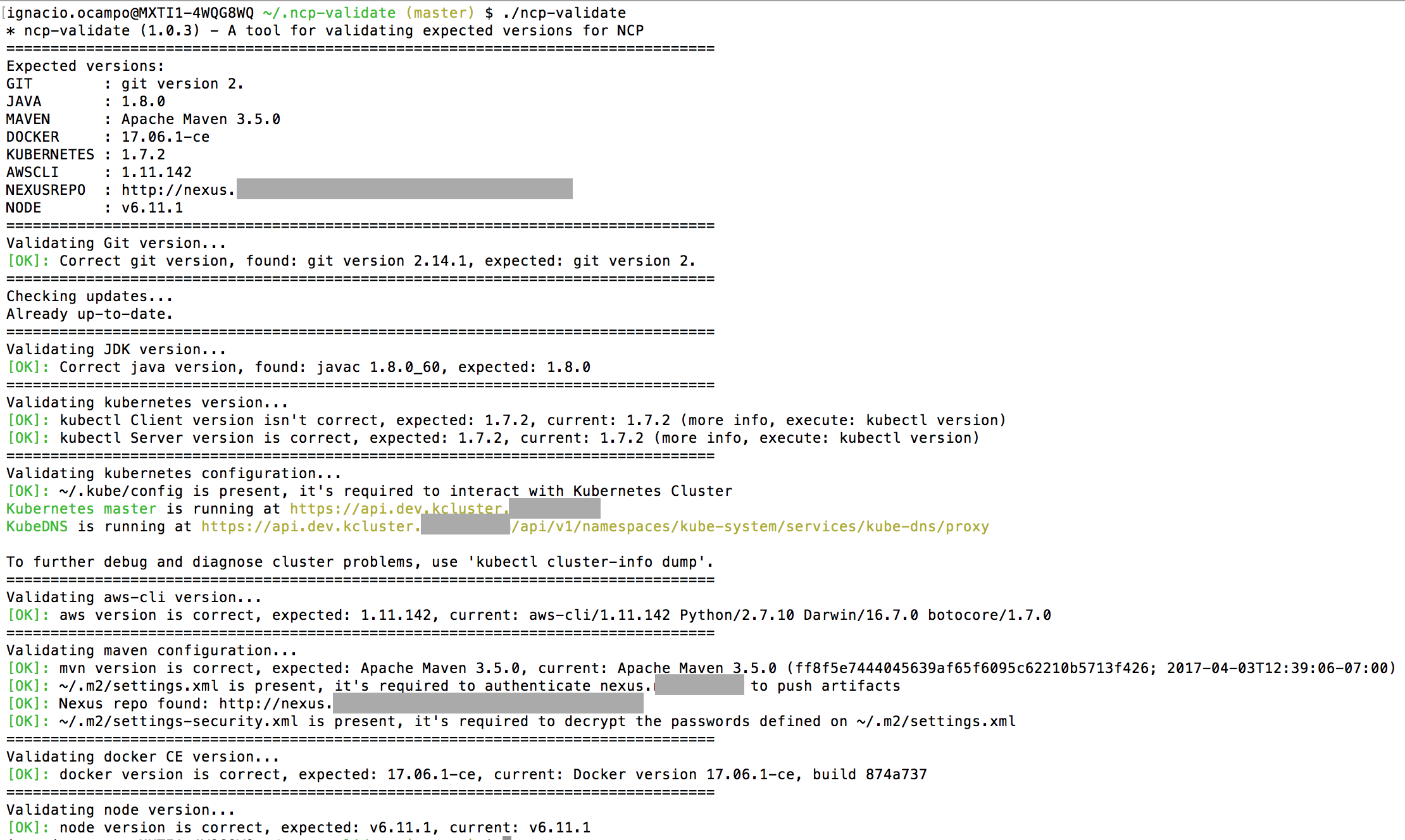Jenkinsfile: Microservices Continuous Integration/Delivery with Jenkins, Kubernetes & fabric8
In this example I’m going to show how to define a Jenkinsfile using the Scripted format (a domain-specific language based on Groovy). This example only consider the “dev” environment, I have plans to update this post in the future with other environments.
If you want to understand more about what Continuous Integration is and how it does work, visit this article from Martin Fowler.
Before start, I will define the context in which I’m using this Jenkinsfile to give you more visibility about the utiliness of it:
This Jenkinsfile is part of a Maven Archetype that I’m using to develop microservices, this way I ensure consistency across projects, thats why you will see some ${variables} that are being replaced at the moment of the creation of the project based on the artifact.
For a complete reference of Jenkins steps, visit this page: https://jenkins.io/doc/pipeline/steps/
Lets review each point in detail:
1. Try block
It’s the typical try/catch syntax for Java/Groovy, with this approach, even though an exception could be raised in any part of the Jenkinsfile, I can catch it to do something meaninful with it, as you will see later.
2. SCM checkout
This step performs the checkout of the repo.
Additionally, I validate if the last commit contains the “maven-release-plugin” string in any part, if so, I set the result as SUCCESS currentBuild.result = 'SUCCESS' and to stop the pipeline return.
This isn’t the most elegant way to handle this, but, even though Jenkins does have the option to ignore commit based on certain criterias, there is an unresolved bug (JENKINS-36195) reported on Jenkins

(Option present in the UI but not working)
3. Validate environment
This step executes a bash script I have created to ensure the environment does have the right versions of tools such as java, awscli, docker, maven, git, npm, etc., I’m using this script also in my laptop to avoid potential incompatibility problems with thinks like yum update or brew update.
Any small change in any version will cause a non-zero exit return code, which will causes the pipeline to fail.
The script is available in the global path, so that I can call it wherever I’m, it is versionated and it does have an auto update feature each time it being called (git pull & restart if changes) to keep it up-to-date all time.
You can download a copy of the script here, it has been tested in Linux & Mac.
4, 5. Compile & Tests
sh 'mvn -B clean compile' & sh 'mvn -B test'
Starting from this step, I basically executes the basic Maven’s phases http://maven.apache.org/guides/introduction/introduction-to-the-lifecycle.html. -B option is for: Run in non-interactive (batch) mode (disables output color).
6. Package (Install)
sh 'mvn -B install fabric8:resource fabric8:build -DskipTests'
The install phase go thru all the previous phases (validate, compile, test, package, verify) and install your project in your local maven repositor (~/.m2/repository), because of that, I specify -DskipTests to not re-run the tests that have been executed in the previous step.
The fabric8 goals are related to the fabric8-maven-plugin, a Maven plugin for getting your Java apps on to Kubernetes and OpenShift:
- fabric8:resource - Create Kubernetes and OpenShift resource descriptors (.yml files).
- fabric8:build - Build Docker images
I will use the yaml descriptor file and the docker image later to deploy the microservice to the cluster.
7. Push to ECR
sh 'mvn -B fabric8:push' fabric8:push - Push Docker images to a registry.
8. Run Cloudformation template
sh "(aws cloudformation deploy --region us-east-1 --template-file cloudformation.json --stack-name cf-nafiux-${artifactId}-dev --parameter-overrides Env=dev) || true"
WARNING: This command should be refactorized since it always return a zero exit code because of the or true expression at the end, this should be modified and let awscli cause an exception if something goes wrong with cloudformation. I added or true at the end because aws cloudformation return a non-zero exit code if the template didn’t change.
9. Deploy microservice
sh 'mvn -B fabric8:apply' fabric8:apply - This goal applies the resources created with fabric8:resource to a connected Kubernetes or OpenShift cluster.
10. Integration tests
sh 'mvn -B verify -DskipUTs -DsvcEndpoint=https://svc.dev.apps.foo.bar -Djavax.net.ssl.trustStore=pwd/${artifactId}-it/src/test/resources/test-dev.keystore'
You may ask why you don’t see any explicit goal related to test, that is because I’m using maven-failsafe-plugin, which is designed to run integration tests.
A note from the official documentation:
when running integration tests, you should invoke Maven with the (shorter to type too)
mvn verify, rather than trying to invoke the integration-test phase directly, as otherwise the post-integration-test phase will not be executed.
The -DskipUTs it’s a property that I’m using with maven-surefire-plugin to know when I don’t should execute the unit tests:
<plugin>
<groupId>org.apache.maven.plugins</groupId>
<artifactId>maven-surefire-plugin</artifactId>
<version>2.20</version>
<configuration>
<skipTests>${skipUTs}</skipTests>
</configuration>
</plugin>
Finally, the -DsvcEndpoint and -Djavax.net.ssl.trustStore are other properties that I’m using inside the integration tests.
11. Release
sh 'mvn -B release:prepare release:perform -Darguments="-DskipTests"'
These goals are related to the maven-release-plugin.
I prefer to perform the release goal only if everything it’s ok.
12, 13. Success & Failute Slack notification
The try/catch block does possible to execute one of the two depending on the case.
Success:
slackSend color: "#00FF00", message: "Build finished: http://ci.foo.net/job/${env.JOB_NAME}/${env.BUILD_NUMBER}\nHealthcheck: https://svc.dev.apps.foo.bar/api/${shortName}/v1/healthcheck"
Failure:
slackSend color: "#FF0000", message: "Build failed: http://ci.foo.net/job/${env.JOB_NAME}/${env.BUILD_NUMBER}/console ${e.message}"

Jenkins - Stage view

